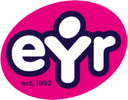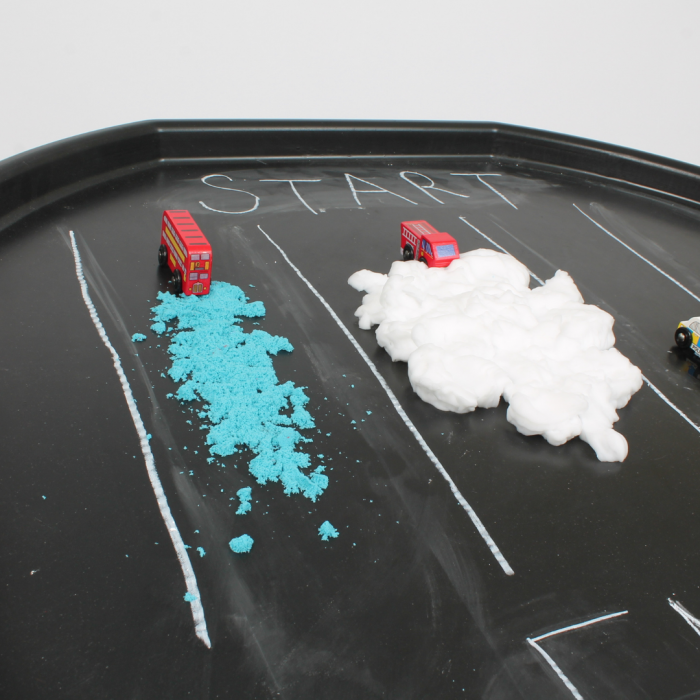STEAM in Early Years - What is it?
Posted by EYR Team on 31st Jul 2023
read more
What is STEAM?
STEAM is an acronym that stands for Science Technology, Engineering, Art and Maths. Rather than addressing each of these areas individually, STEAM is an integrated approach that encourages children to think more broadly and allows them to gain a wide range of skills and knowledge.
This may sound complicated but the learning it stands for is embedded in most aspects of early years. It is present in play, exploration, curiosity, observation and questioning.
Exploring each aspect in turn...
Understanding what each of these topics “looks like” in early years is the key to understanding how to implement STEAM in early years settings.
Science
Firstly, science is based upon our innate curiosity to explore. It can refer to ourselves, others, our interconnectedness and the world around us.
So how does this translate into Early Years learning?
- In the simplest of ways, children effectively engage with science with the use of their senses as they explore the world around them.
- Nurturing a scientific approach is to encourage children to investigate, observe, gather evidence and evaluate.
Technology
Technology is all about doing and more specifically – putting thoughts and questions into action. In early years this manifests itself as children finding solutions to real problems and implementing them.
Engineering
Taking technology one step further, engineering is all about designing and building. Here, children explore solutions by designing and redesigning. In this area of STEAM, children learn:
- Decomposition: breaking a concept down into smaller parts
- Abstraction: removing unnecessary details
- Collaboration: teamwork to achieve an end goal
Art
It goes without saying that Art is all about creativity. Within STEAM, it is arguably art that motivates children to engage as they have a chance to express their creativity.
Maths
More than basic counting, Maths is here referred to as a mindset that is analytical and curious as well as open and creative.
How to provide opportunities for STEAM in early years settings
- The first step in providing STEAM opportunities is to provide a STEAM-rich environment. This means providing a variety of materials that will encourage children to explore and experiment. Some examples of these resources are:
- Water play: funnels, tubes and containers
- Creativity resources: paints, 3-D materials, craft resources
- Sensory resources with a variety of textures, colours, sounds etc to explore
- Construction pieces: wooden blocks, train tracks, connecting pieces
- Investigative tools: magnifying glasses, measuring devices, scales, measuring resources
- Technology resources: ramps and pulleys
- Open-ended resources: cups, blocks, loose parts
2. Use STEAM language in everyday lessons and activities. This could be size words, numbers or asking questions that require problem-solving. This way children will become accustomed to applying problem-solving and analytical skills to everyday activities.
3. Remember that STEAM learning is predominantly child-led. Ensure that you encourage autonomy and independence by making resources easily accessible to support free play and exploration. Follow children’s interests to further ignite curiosity.
4. Support inquiry by asking open-ended questions during play. This could be done during the simplest of activities to encourage deeper thinking.
STEAM activities to try...
- Explore the great outdoors! Getting outside is a great place to start STEAM learning as there is so much to observe. Why not provide children with a colour chart or a shape chart and task them with finding objects that match.
- Have a car race! Start by setting up a tuff tray on an angle and draw lanes for each car. Children will then have to test various materials that will speed up or slow down their vehicle. This will require trial and error and analytical skills
- Play games that support the development of executive functions like “Simon Says”.
- Task your children with creating a boat that floats. This is a collaborative activity that will make use of their creativity, critical thinking, experimenting and analytic skills.
- Make a volcano! Children can first explore their creativity by crafting their own volcano from clay. Secondly, their curiosity will be ignited by measuring and mixing materials together to create an eruption!
For more STEAM activities to try in your setting - head to our science activities blog: 5 fun science experiments you can do at home.





